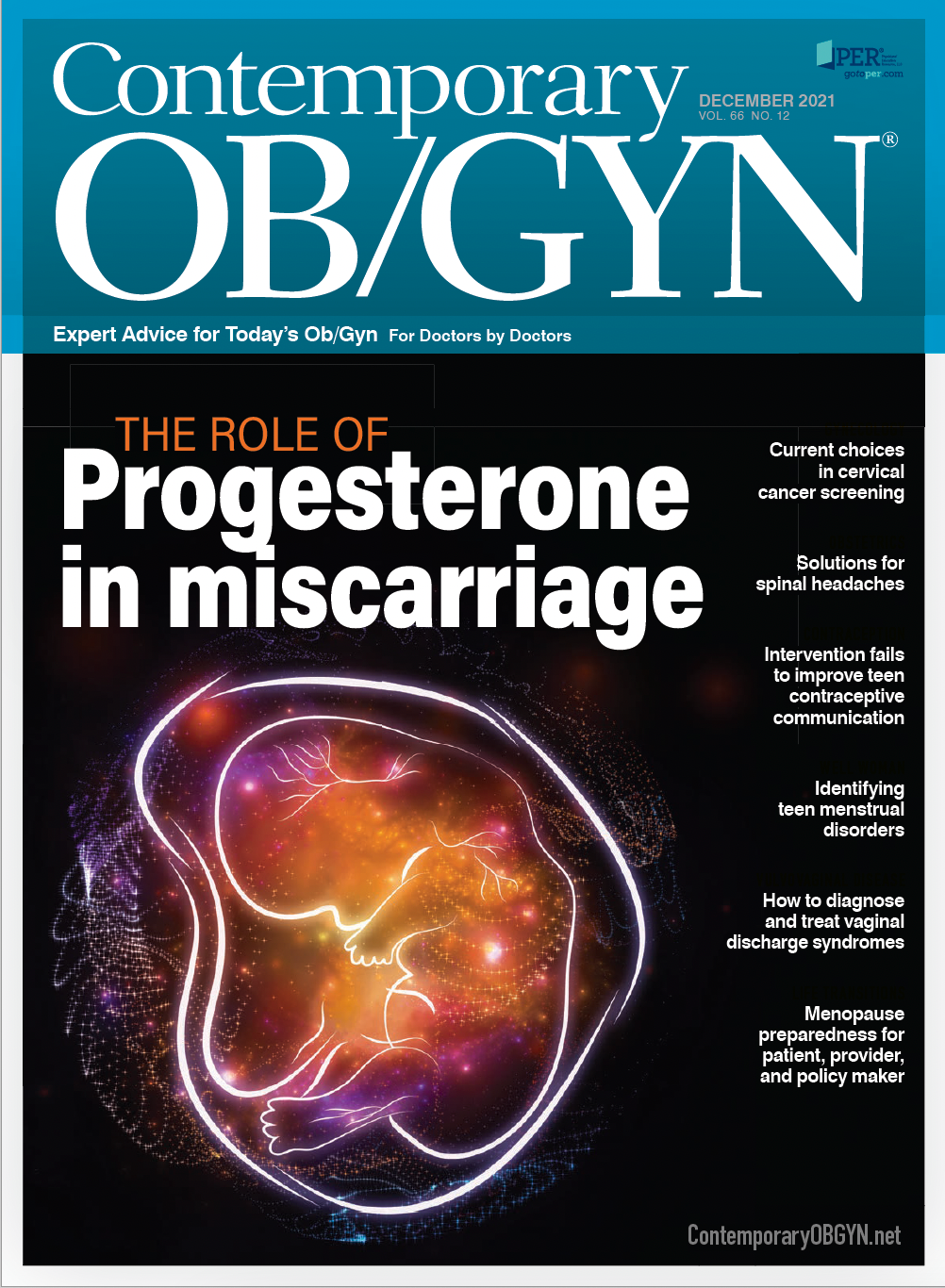Diagnosing and treating vaginal discharge
Inappropriate treatment is widespread among women with vaginitis symptoms, according to a study conducted in a community practice setting.
The study in Clinical Infectious Diseases found that 42% of women were not given the appropriate prescription and that women without infections who received empiric treatment were significantly more likely to have recurrent visits within 90 days compared to those not receiving treatment.1
The authors noted that—despite the prevalence of vaginal symptoms—diagnosis of bacterial vaginosis (BV), vulvovaginal candidiasis (VVC), and trichomonas vaginalis (TV) is not standardized.
The study enrolled 303 symptomatic women from 8 clinics affiliated with the University of Pittsburgh Medical Center between July 2017 and March 2018. Patients had a mean age of 29.4 years, 90% were not pregnant, and 79% were White.
At the time of presentation, all women had at least 1 of the following symptoms: abnormal vaginal discharge (68%), vaginal malodor (46%), vulvar-vaginal itch (44%), and vulvar discomfort (burning, pain, irritation) (42%).
Overall, 64% of women reported more than 1 complaint consistent with vaginitis.
Furthermore, 38% of women reported vaginitis treatment in the prior 30 days, with 18% of the study population reporting use of antifungals and 14% reporting the use of oral or vaginal metronidazole in the previous month.
Participants were evaluated per standard office-based practice, with 27 clinicians providing data. In total, 35% of visits were conducted by physicians and 65% by advanced practice providers, such as nurse midwives, physician assistants and nurse practitioners.
Point-of-care tests were rarely performed: vaginal pH (15%), potassium hydroxide/whiff (21%), and wet mount microscopy (17%).
Overall, 290 women had evaluable vaginal swab samples.
Of the 170 women having a laboratory-diagnosed cause of vaginitis, 47% received 1 or more inappropriate prescriptions.
Furthermore, among the 120 women without BV, TV, or VVC, 34% were prescribed antibiotics and/or antifungals, with 5% receiving both antifungals and antibiotics, 7% receiving antifungals alone, and 23% receiving either oral or vaginal metronidazole for BV.
For women without infectious vaginitis, return visits for vaginitis symptoms were much more common among women treated empirically compared to those without treatment: 22% vs. 6% (P = 0.02).
“The results of the present study suggest that the current approach to management of vaginal discharge provides suboptimal care,” wrote the authors. “Significant time burdens placed on primary care providers and the time and effort necessary to perform inexpensive point-of-care tests are likely balanced against other competing priorities.”
Nonetheless, a shift in models of care may be indicated for women with vaginal discharge syndromes, according to the authors, which would require a combination of sensitive and specific laboratory testing, careful patient evaluation, and clinical judgement to accurately diagnose women presenting with symptoms of vaginitis.
Asking women who contact a clinician’s office with vaginal symptoms to provide self-collected vaginal swab samples, which have been shown to be equivalent to clinician-collected samples, might be one approach for testing.
Prescriptions can also be written to cover the specific pathogens identified. Women with no identifiable infectious etiology could then be counseled that no antifungal or antibiotic therapy is necessary.
__
Reference
- Hillier SL, Austin M, Macio I. Diagnosis and treatment of vaginal discharge syndromes in community practice settings. Clin Infect Dis. 2021 May 4;72(9):1538-1543. doi:10.1093/cid/ciaa260

Current treatments for recurrent bacterial vaginosis leave many patients dissatisfied
February 28th 2025A new study presented at ISSWSH highlights patient dissatisfaction with current treatments for recurrent bacterial vaginosis, emphasizing the need for more effective therapies and improved provider communication.
Read More
Dequalinium chloride found noninferior to metronidazole for BV treatment
May 9th 2024Explore how dequalinium chloride stands as a promising alternative to metronidazole in treating bacterial vaginosis, offering comparable efficacy, safety, and tolerability, as revealed by a recent noninferiority trial.
Read More
